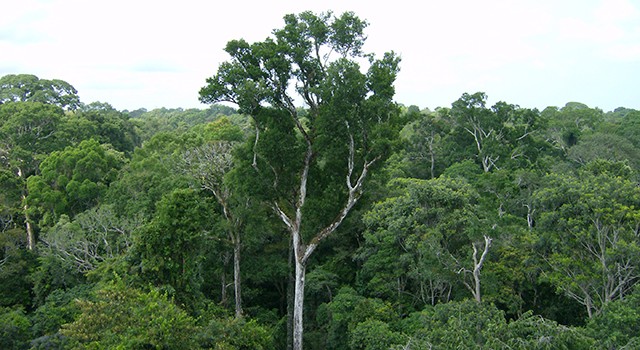The world’s forests constitute the most varied and diverse terrestrial ecosystems on the planet, and are home to thousands of species of plants, animals and microorganisms.
A new study of all major forest ecosystems on Earth finds that conserving these diverse forests not only retains a species-rich environment, but also maintains the forests’ output and services for future generations.
The study, published in Science Oct. 14, reveals that biodiversity – the variety of living things on Earth – in forests promotes productivity. In other words, when the number of tree species increases, so does the amount of timber that can be harvested. They also found the opposite to be true – a decline in biodiversity would result in an accelerating decline in forest productivity.
“This is further evidence that biodiversity generates productivity benefits. Indeed, the productivity gains from conserving forest species far exceed the costs of conservation,” said Chris Barrett, a co-author of the study and the Stephen B. and Janice G. Ashley Professor of Applied Economics and Management at the Charles H. Dyson School of Applied Economics and Management. “This finding is extremely robust across eco-regions and countries worldwide. Forest biodiversity conservation pays.”
The research team worked on an impressive scale, collecting massive amounts of data from around the world.
“We are very fortunate to have worked with so many dedicated foresters and researchers on this study,” said Jingjing Liang of West Virginia University, lead author of the study. “This team by itself shows that diversity can bring forth great productivity in scientific collaboration.”
Scientists from 90 institutions consolidated field-based data forming one of the largest global forest inventory databases in the history of forestry research.
Tens of thousands of forestry professionals collected the underpinning data, which extended over a period of 150 years.
In total, data was collected from more than 770,000 plots consisting of more than 30 million trees across more than 8,700 species.
The study took into account all major global forest ecosystems across 44 countries and territories. It included some of the most distinct forest conditions on Earth, such as the northernmost, in Siberia; the southernmost, in Patagonia; the coldest, in Oimyakon, Russia; the warmest, in Palau, an archipelago in the western Pacific Ocean; and the most diverse, in Bahia, Brazil.
After analyzing the data, researchers determined that loss of tree species richness – through deforestation, forest degradation and climate change – would accelerate the decline in forest productivity worldwide.
This means that as diversity decreases, so does the tree yield – the amount that can be harvested – whether it be timber or another forest characteristic.
Researchers estimated that with a decline in tree species richness from the current level to one species, commercial forest productivity across the world would also decline up to 66 percent, even if other things including the total number of trees remained the same.
Researchers calculated that the amount of loss in productivity associated with the loss of tree species richness would have an economic value of up to $500 billion per year across the world.
That amounts to more than double what it would cost to implement effective conservation for all of Earth’s ecosystems.
“The strongest economic message of this study is that the economic benefit of forest species diversity far exceeds the cost of preserving it, even when we only consider its role in maintaining the global commercial productivity of forests,” said co-author Mo Zhou of Davis College.


